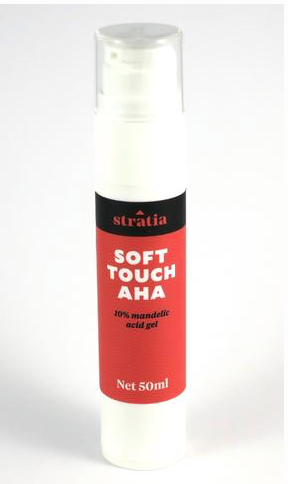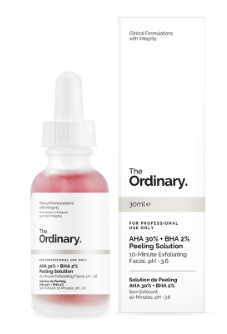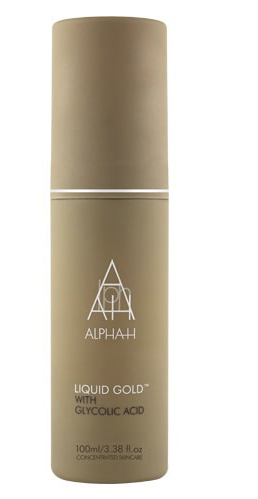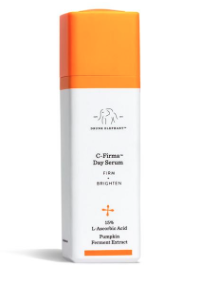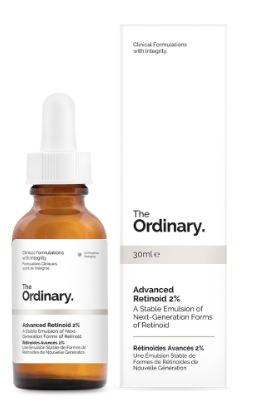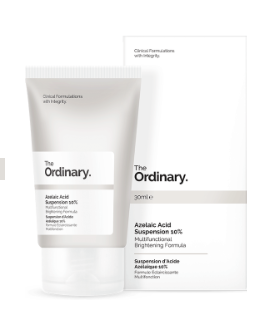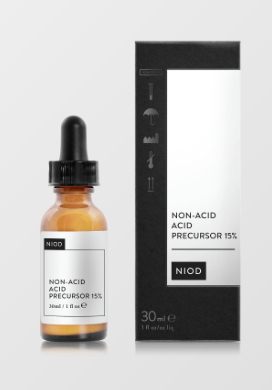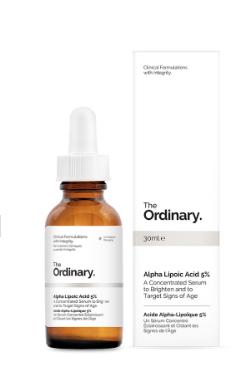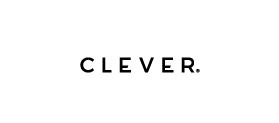Skincare Question | How Would I Use Multiple Acids in my Skin Care Routine?
/“Exfoliation is key. It eliminates dead skin cells and polishes skin, refines pores and smoothes wrinkles.”
Chemical exfoliants are becoming quite popular, and with that popularity the range of exfoliants available has grown. They all seem interesting and could possibly be a great addition to your skincare routine, but what do you do when you want to purchase more than one? Does it make sense to have a routine that contains multiple chemical exfoliants in it?
Chemical exfoliants at there simplest help to remove built up dead skin cells, work to improve cell turnover and regeneration and in some cases can assist with the development of collagen and reduce fine lines and wrinkles. So they can play a vital role in maintaining soft, smooth healthy skin.
If you want to know more about chemical exfoliation in-depth check out Lab Muffins, exfoliation guide.
I think the first place you should start is with what your skin needs and concerns are. Acids may not have any place in your current routine if they don’t fit your skin needs. For myself I struggle with texture concerns, so right now that’s my focus, however I do have some secondary things that I would like to improve or maintain such as removing dead skin cells, cell regeneration and reducing hyper-pigmentation.
For myself I would want to use multiple exfoliators layered on top of each other but this isn’t the best idea as it can be too much for you skin. Over exfoliating your skin is just as bad if not worse than not exfoliating your skin at all.
My skin needs and concerns
- Fading dark spots, hyper-pigmentation
- Brighten skin tone
- Even skin tone
- Reduce appearance of pore size
- Softer, smoother skin
- Reduce fine lines
ProductsI’m Interested in.
Stratia soft touch AHA Gel. $14 USD 50ML . It claims to Increase cell turnover, Fade hyper-pigmentation, Stimulate collagen production and regulate sebum production. The website says it ‘has 10% mandelic acid, along with skin-soothers like aloe, chamomile, and allantoin to give you bright, smooth skin with the least amount of irritation possible. Its light gel formula dries quickly and can be used under makeup and other skincare products.’ It can be used 2-3 times a week and has a PH around 3.4
The Ordinary AHA 30% + BHA 2% Peeling Solution. $7.60 CDN 30ML . The website says that this solution offers deeper exfoliation to help fight visible blemishes and for improved skin radiance. The formula also improves the appearance of skin texture and reduces the look of fine lines with continued use. Due to the high percentage of AHA suggested usage is once a week, this formulation has a PH around 3.6. Due to the nature of the product, it being a peel, it should not be left on the skin for longer than 10 minutes, keeping it on longer may result in a chemical burn. The product should be rinsed off, the company says that it should be used as a mask.
Alpha-H Liquid Gold $47.80 CDN 100ML. This product is said to be ‘a powerful resurfacing and firming treatment for diminishing wrinkles, pigmentation and sun damage. It works to jump start the skin's metabolism, tightening enlarged pores and giving a brighter, clearer complexion.’ This is an Glycolic acid AHA based product, the website suggests using it 3-4 times a week, and to not follow up with a night cream so that the full benefits of the product can be reaped uninterrupted. The percentage of acid used is not mentioned anywhere.
Drunk Elephant C-Firma Day Cream $100 CDN. The company says that this product is a super-potent vitamin C day serum packed with a powerful antioxidant complex, essential nutrients, fruit enzymes and a chronopeptide that provides the benefits of Vitamin D, all working together to firm and brighten the appearance of skin, while improving the signs of photoaging. It’s meant to help defend against pollution, environmental stressors and the damaging effects of free radicals while replenishing lipids, visibly reducing the appearance of dark spots and wrinkles. It has a PH around 3.4, the company says that the cream has a ‘reservoir effect’ which means itwill stay active on the skin for 72 hours and can’t be rubbed off or washed off.
The Ordinary Advanced Retinoid 2% $9.80 CDN 30ML. The Deciem website says that this product uses next-generation retinoid active technologies which have been shown to achieve better reduction in signs of ageing than retinol without irritation. Because it can cause the skin to be more sensitive to UV radiation it’s recommended that you use it in the evening and apply a sunscreen in the morning. Which is the rule of thumb when it comes to products of this nature. The PH of this product is around 5-6. This version is more serum like so isn’t has harsh or irritating on the skin
The Ordinary Azelaic Acid Suspension 10% $7.90CDN 30ML. This product is meant to brighten the skin tone while visibly improving the evenness of skin texture and reducing the look of blemishes. It is a multi-functional support ingredient for all skin types and also acts as an effective antioxidant. The PH is around 4-5 so it won’t be has irritating on the skin, it’s a cream-gel solution so applies like a moisturizer and is applied after serums in your skin care routine.
NIOD Non-Acid Acid Precursor $55 CDN 30ML. The company says that this product is a non-acidic alternative to acid-based epidermal resurfacing. Instead of using direct acids like AHA/BHA or retinoids that are common in skincare, NAAP uses fermentation bio-derivatives and amino isolates that act as precursors to skin-compatible acids, encouraging visible radiance and visible surface regularity without the redness and inflammation associated with acids. It contains ingredients that does the work that an AHA based product or retinoid product would do such as exfoliation and cell turnover.
The Ordinary Alpha Lipoic Acid 5% $6.80 CDN 30ML. This is an acid that I haven’t heard much about before. Doing a google search showed that for the most part it was taken internally and was shown to have positive effects on the skin. Deceim says that this product which is topically applied is a highly potent antioxidant and can restore a renewed skin appearance, improving visible skin texture and tone. Due to the high percentage of Alpha Lipoic Acid daily use is not recommended. It’s also suggested that it be used only in the evening. It’s an interesting formulation that contains no water, oil or alcohol.
What Does Each Acid Do For Your Skin?
Mandelic Acid.
Mandelic acid is AHA (alpha hydroxy acids). based and is extracted from bitter almonds. As a quick review an AHA adheres to the skin in order to peel away dead and dying skin cells so that new cell growth is revealed and so that new skin cells grow faster. Mandelic acid has larger molecules which means that it’s not able to penetrate as deeply into our skin as other AHA based acids. Because of this your skin doesn’t get as irritated, it also has an antibacterial effect on the skin, which is great if you are acne-prone. Mandelic acid is also said to work well for those who are deeply pigmented and have a darker skin tone.
Lactic Acid
Lactic acid is derived from sour milk and is known for it’s skin softening abilities. Lactic acid works on the surface of the skin which makes it gentler that some of the other AHA based acids. It can gently lighten your skin, helping with acne scars and uneven skin tone. Because this acid works on the surface as opposed to deeper in the skin it’s great for those that have dry or sensitive skin.
Glycolic Acid
Glycolic acid has the smallest molecules of any of the AHA’s, which means that it’s able to penetrate deeper into the skin, which means that is has the ability to make a bigger difference in the appearance of your skin. It’s been said that glycolic acid can also help stimulate collagen production which aids in keeping the skin plump. Glycolic acid also has some humectant components which helps to keep the skin moisturized. The use of glycolic acid can make your skin look brighter and fresher.
Retinoids
Retinoids are more irritating that AHA’s which can be problematic if you have dry skin. Studies have shown that retinoids exfoliate and reset the misbehaving cells beneath the surface. They are also able to help reverse sun damage to the skin. It can reduce wrinkles, fade dark spots, brighten your skin, boost collagen production, firm and thicken the skin and even help treat acne. In general it helps your skin look better.
Azelaic Acid
Azelaic acid acts in part to prevent acne by inhibiting the growth of the bacteria that causes acne. It also works the cells that line hair follicles by changing the way they multiply and age. This leads to a decrease in clogged pores which result in blackheads and whiteheads. Azelaic acid works to lighten dark spots, specifically targeting areas that have hyper-pigmentation. Like all acids it can cause some itchiness and irritation when first applied.
Alpha Lipoic Acid
The Livestrong website says that Alpha lipoic acid also has the ability to smooth skin by increasing its exfoliating capacity, or the removal of dead skin cells from the skin's surface. In addition, this potent little antioxidant regulates the production of oil glands, as under or overproduction can clog pores. It also helps with puffy eyes and helps reduce lines and wrinkles. Skin colour is enhanced, and pore size is minimized to give the skin a more polished look. ALA is able to penetrate deeply into the skin because it’s both water and oil soluble.
Vitamin C
Vitamin C has many derivatives the most common being Ascorbic acid. Ascorbic acid helps create younger-looking, firmer-feeling skin while signs of uneven skin tone and spots seem to disappear. Ascorbic acid also helps skin’s surface defend itself from external stressors, lessening the effects of exposure to the elements. Vitamin C also helps your skin screen absorb into your skin better.
So What would I Choose ?
I’ll be honest with you, I want pretty much all of the products I’ve mentioned above. Though I do mention lactic acid in the acid breakdown I didn’t include one in my list of products I’m interested in because it’s not geared towards my skin type. I’m neither dry or sensitive so I wouldn’t reap the full benefits of using it, ergo I didn’t include any products of that nature.
Figuring out how to use some of these is quite easy, the day cream can be used daily and would be in the morning, so it would have no conflicting product to contend with. The AHA and BHA peel would be used once a week if so much, it would depend on how my skin reacted. Because it’s a peel it’s not something that requires daily or even weekly use. Now for the rest of the items, it gets a bit tricky. Each of the items uses a different chemical exfoliant so there’s no crossover issues there, however they operate in a similar manner.
How Would I Use Them?
As I said before I don’t want to over exfoliate my face, so having some sort of rotation would be needed. I would use the lighter acids, mandelic and azelaicmore frequently possibly 2 times a week and the stronger acids, glycolic and retinoid once a week on alternate weeks.
I don’t have it mentioned in the above list but I do have a BHA chemical exfoliant that I use. BHA’s differ from AHA’s in that they are oil soluble whereas AHA’s for the most part are water soluble. The PH of BHA’s tend to be a bit lower than that of AHA’s so you are able to layer them on top of each other without fear of disrupting the PH level of your AHA. BHA’s are great for getting into your pores and clearing out excess oil and build up. The caveat to this routine would be how my skin reacts. If I use one of these products and have an adverse reaction or feel that overall there’s just too much exfoliation happening for my skin then of course I would have to amend my ‘schedule’. Is this a lot it sure is, but am I a product junkie.
Do you use chemical exfoliants in your skin care routine? If so do you have any that you would recommend?

